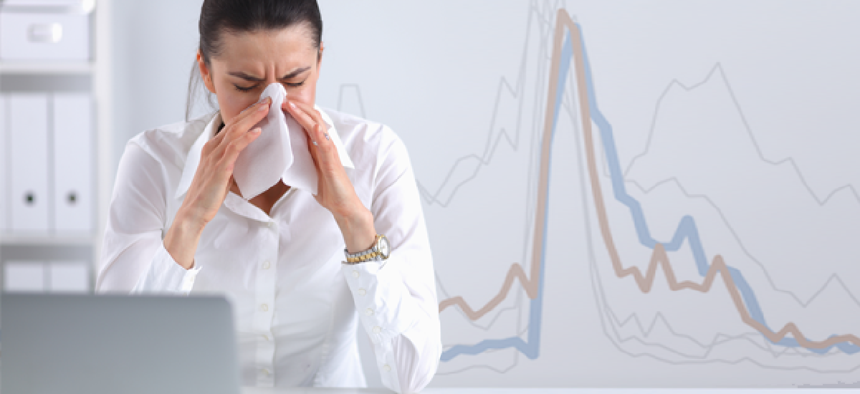NYC’s early warning system for infectious diseases

A network of smart thermometers will allow public health officials to analyze data on individual neighborhoods so they can craft policies to control outbreaks of flu or COVID-19.
A public/private partnership between New York City and Kinsa aims to create a citywide early warning system for infectious illnesses such as flu and COVID-19.
The agreement builds on an early warning and response system that the city set up last year in response to the pandemic. The NYC Recovery Data Partnership is a first-of-its-kind effort to bring community, nonprofit and private businesses together to share data. Kinsa, which tracks the spread of illness in real time and predicts future outbreaks using data collected from smart thermometers, provided county-level data to that effort.
“Our new, multiyear partnership aims to increase the amount and resolution of aggregated data the Department of Health [and Mental Hygiene] receives from Kinsa by significantly expanding Kinsa’s network in the city, which will enable our public health leaders to analyze this surveillance data beyond the county level and down to the individual neighborhood level,” Peter Hatch, New York City’s COVID-19 public/private partnership czar, wrote in an email to GCN.
The agreement supports the city in three ways, he said. One is by providing additional real-time data that can help confirm the accuracy of currently reported data.
“Second, as the Kinsa data are reported by families at home, days or weeks before they may contact a health care provider, it can help us predict outbreaks of COVID or flu earlier,” Hatch said. “Finally, this program will increase the amount and resolution of aggregated data the Department of Health receives from Kinsa by significantly expanding the network of smart thermometers in the city, which will enable our public health leaders to analyze this surveillance data down to the individual neighborhood level, informing policy decisions such as where to deploy mobile testing or vaccination services.”
Currently, about 35,000 to 40,000 households in New York City use Kinsa’s smart thermometers, which families get either through retailers or for free through public schools in underserved communities, according to Kinsa CEO Inder Singh. Nationwide, Kinsa has 2.5 million households enrolled in the network and receives data from about 5% of elementary schools.
In New York City, the company plans to give away another 100,000 thermometers through schools, but to get one, families must opt-in to Kinsa’s network for early detection. To enroll, they download Kinsa’s app and create an account. Readings from the thermometers are sent to the app, which then asks users additional questions such as what other symptoms are present and provides guidance on steps for care.
Families can opt out or decide not to activate or use the network, Hatch said. “Based on results from our spring early access rollout, neighborhood COVID data and other conditions on the ground, we will make a final determination of which schools will be offered the opportunity to opt-in to the program for the fall,” he said.
Kinsa is building more services for the city into the app, Singh said. For instance, if someone wants to get a COVID test, the app can direct them to the nearest mobile testing unit.
“There are two additional layers of value to the city,” he said. “One is to the school. The elementary schools will be getting a dashboard that allows them to see local illness levels -- how bad it is in their local area so they can do individual response.”
The other is for the health department. “Kinsa provided NYC’s Department of Health with a customized, real-time dashboard of anonymized, aggregated data from all activated thermometers in NYC,” Hatch said.
That allows officials to see geographically by neighborhood where outbreaks are and conduct poverty, location and age cohort analyses. If officials know that Chelsea sees more rapid spread of illness than the Upper West Side, for instance, they can plan to have more personal protective equipment there and more mobile testing units, Singh said.
User data is stored in the cloud and encrypted at rest. Users can track their histories through the app, but the data being made available publicly is aggregated with no chance of personal identification.
“This is a calculation. It’s not possible to identify a person based on the percentage of people sick,” Singh said.
Additionally, Kinsa combines the real-time data from its network with data from the Centers for Disease Control and Prevention, diagnostic data and weather data.
“The secret sauce is really the network of households,” Singh said. “We’re not smarter than CDC. We just have better data. We see mildly symptomatic illness. The health care system misses that entirely. They don’t talk to mildly symptomatic people. We see household transmission patterns – how fast is it spreading in the household. If you want to know how fast it’s going to spread in the community, you’ve got to know how fast it’s spreading in the primary node of disease transmission: the household.”





